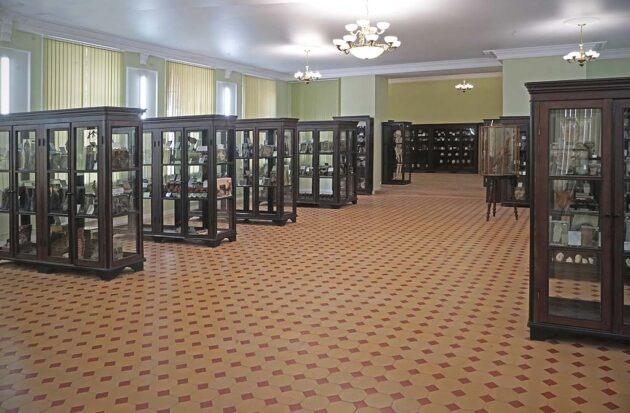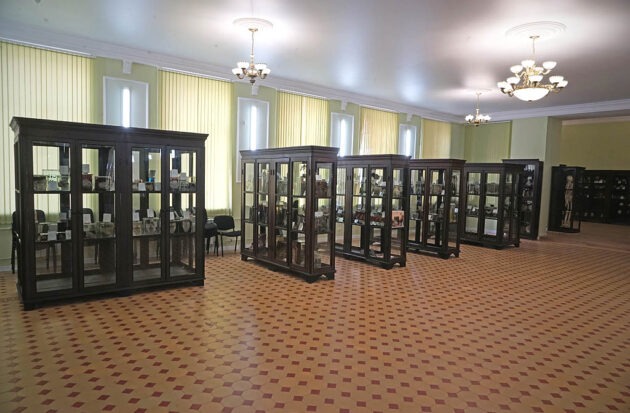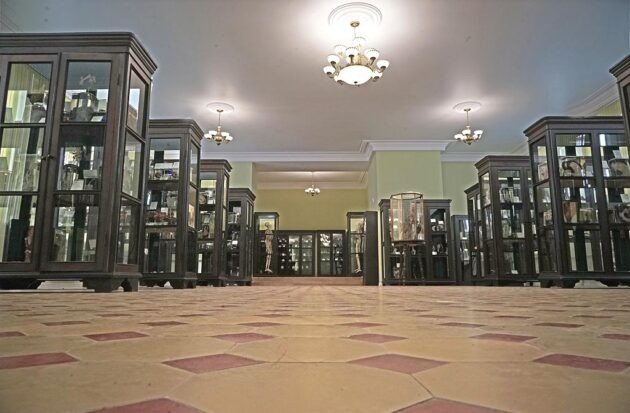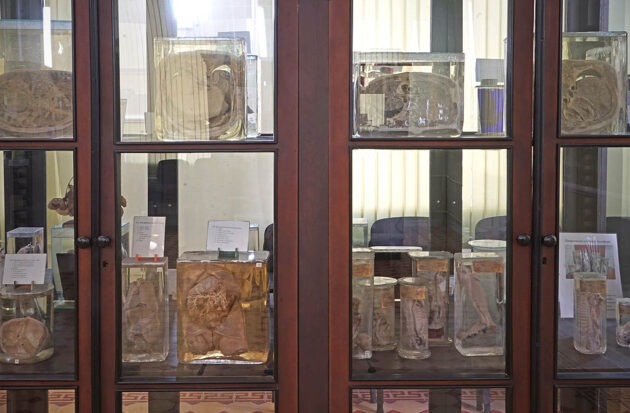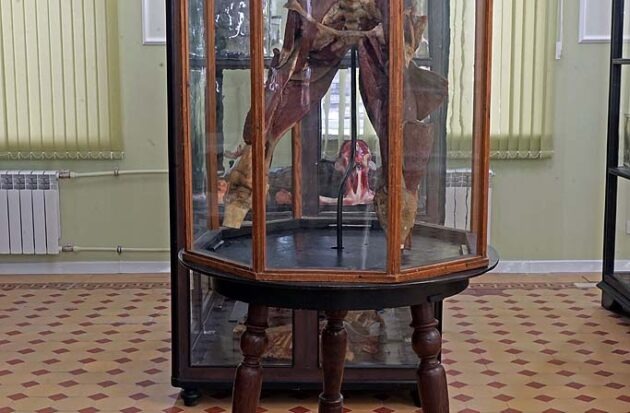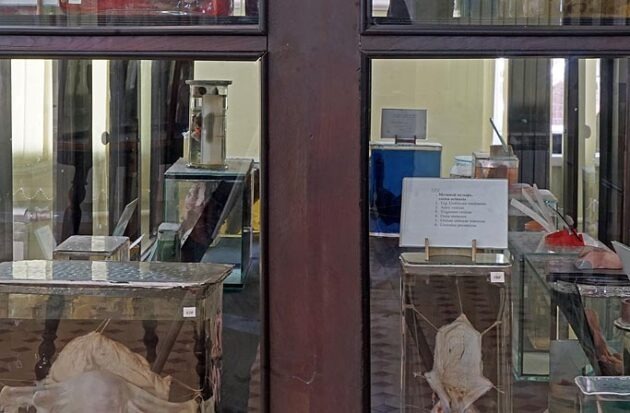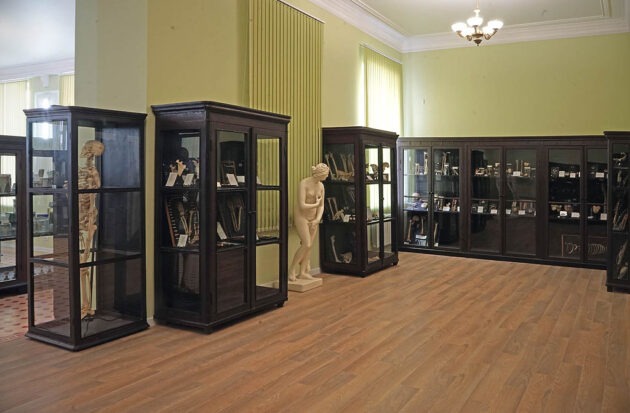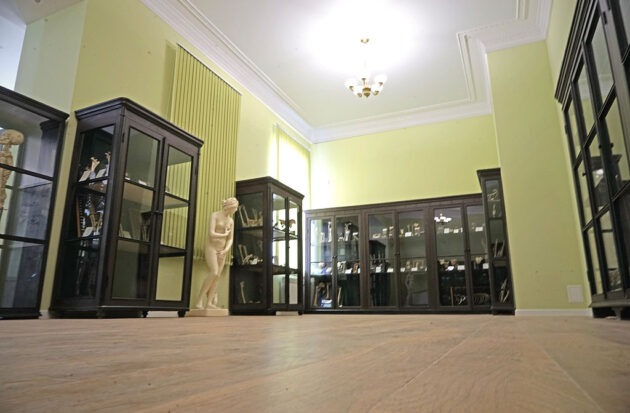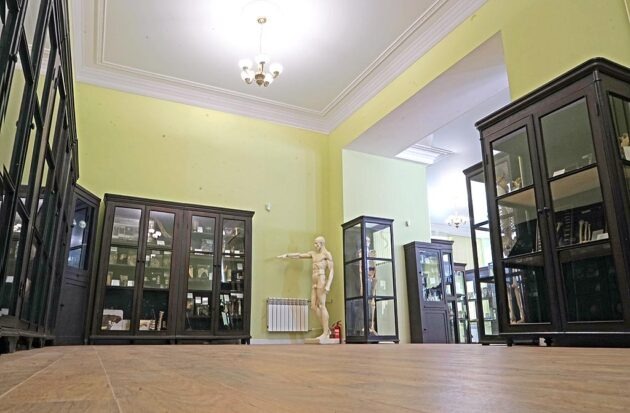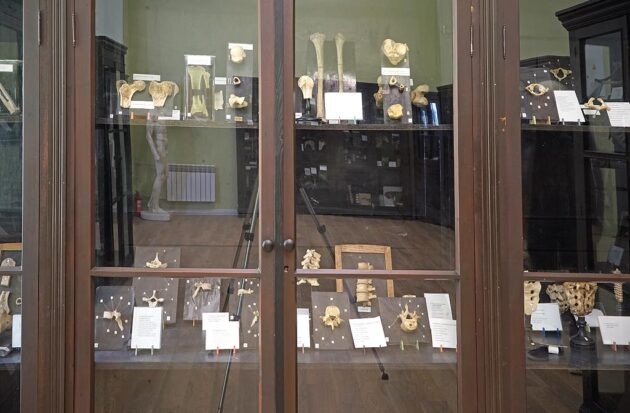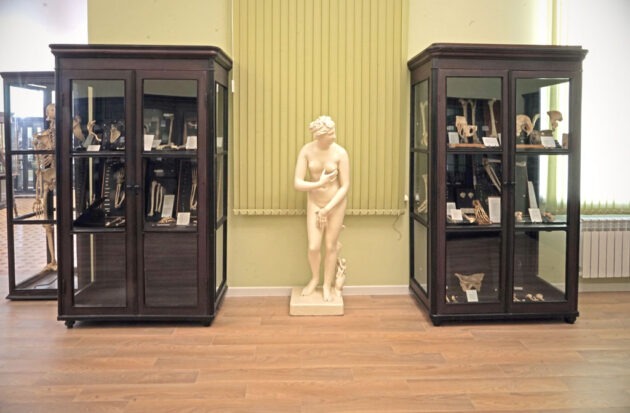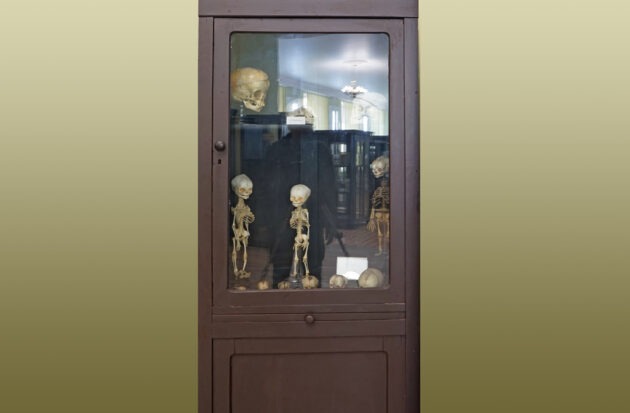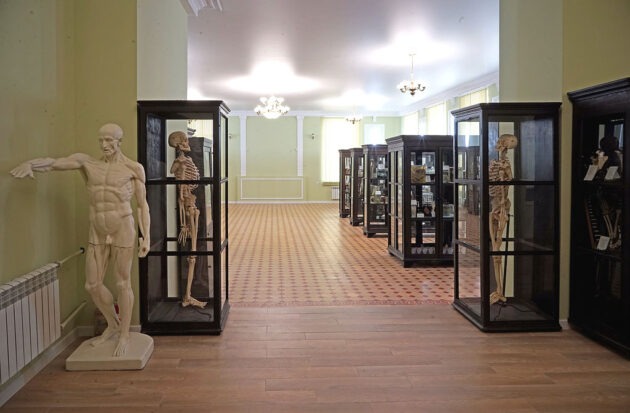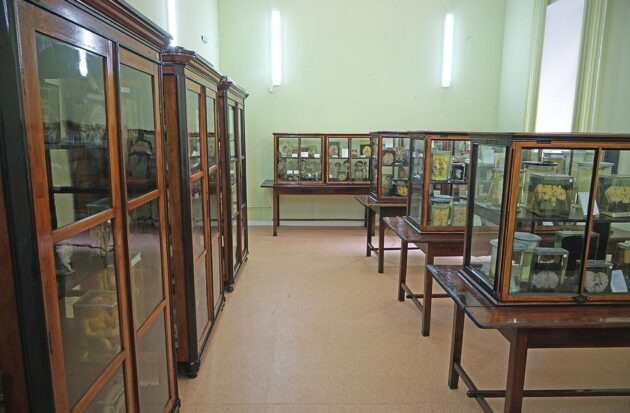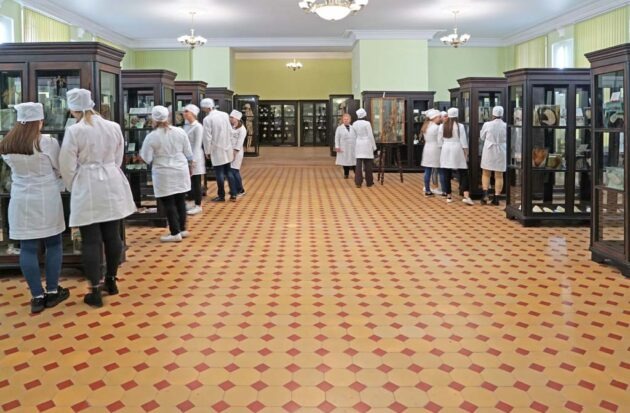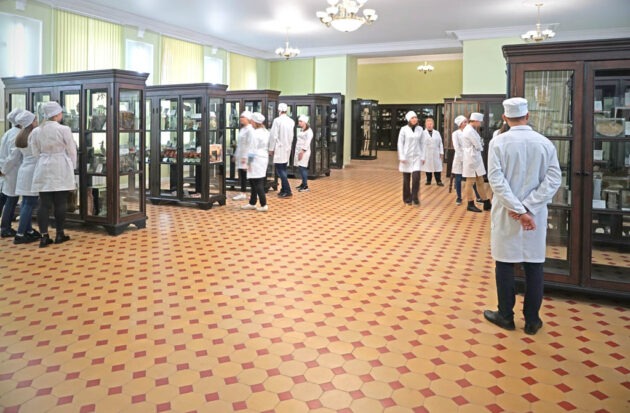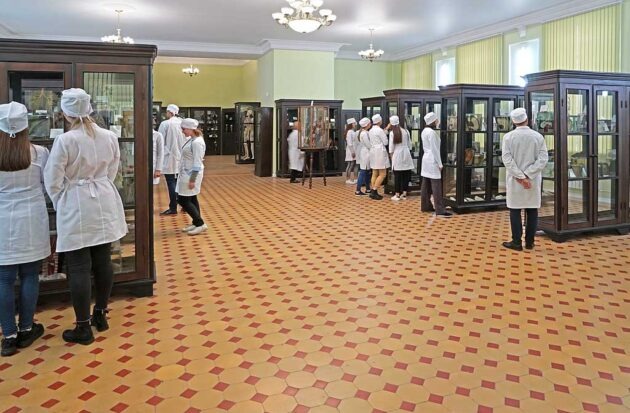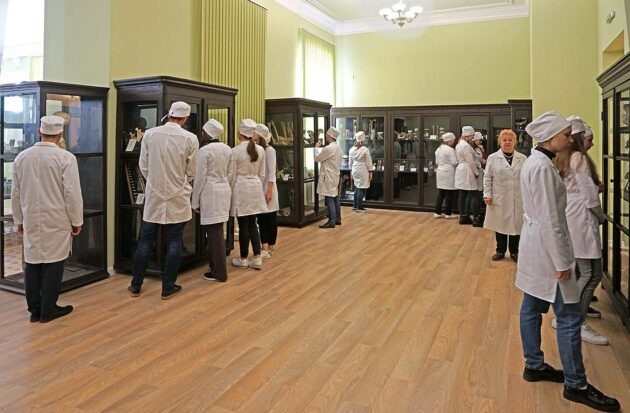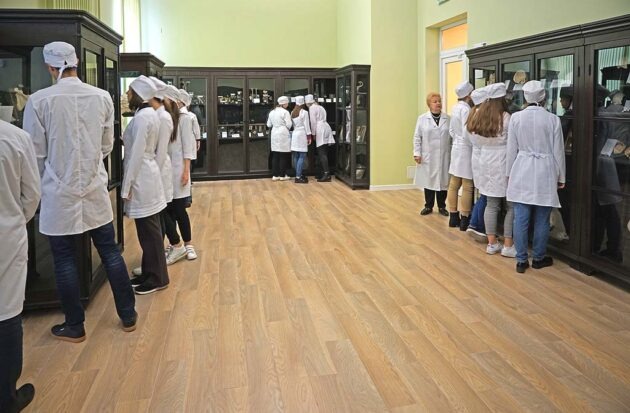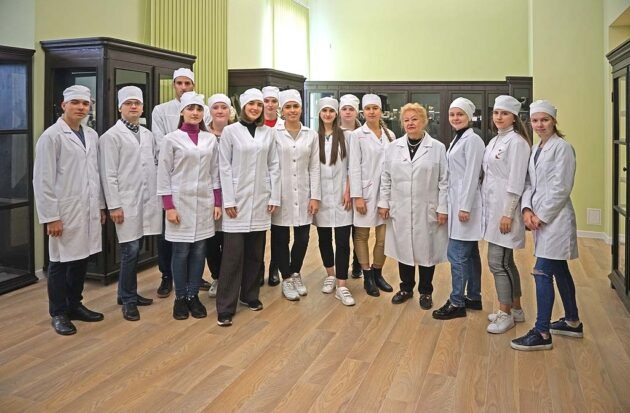Educational Museum of the Human Anatomy Department
- The educational museum was founded in 1804 simultaneously with the department establishment. The first museum preparations were purchased in Moscow, St. Petersburg and France. Gradually, the number of specimens increased, both due to natural preparations made at the department, and artificial, made of wax (Vannoti, Barminsky).
- In 1867, Professor and head of the department I.K. Vagner divided preparations into expositions for two separate museums: The Museum of Normal Anatomy and The Museum of Pathological Anatomy. At that time, The Museum of Normal Anatomy had 506 specimens, including 194 dry specimens, 107 bones, 167 organ specimens and 38 artificial ones.
- The organization of the museum was further developed during the lead of the department by Academician V.P. Vorobyov. A layout of drug specimens has been developed, so that they are accessible for inspection from all sides and are well lit.
- Today the educational museum occupies two halls on the ground floor of the department, where major repairs were made with the restoration of specimens’ cabinets. Museum preparations are mostly made by the faculty staff of the department and students of the scientific society.
- The museum presents more than 2,500 specimens of all the systems of the human body. They are arranged according to the discipline curriculum and demonstrate the normal anatomical structure of human organs, as well as some pathologies.
- The museum of the department is constantly used in the educational process, as well as during the self-directed work of students to prepare for practical classes and exams. The museum hosts lectures and excursions for students of other educational institutions and high school students of the city and region in order to career guidance and admission to our university.
Museum of Human Development
- By the initiative of Academician V.P. Vorobyov, who highly valued the scientific significance of museums, on December 18, 1931, a museum was established, which still exists and is called the “Museum of Human Development”. According to the plan of the great scientist, exhibits were collected to illustrate the development of organs and systems of vertebrates and especially humans in ontogenesis.
- The museum has unique mummified preparations of human organs, which were made in the XVIII century. Some of them were purchased in Germany, others – made by the teachers of the department. At present, the main number of specimens of this museum are from doctoral and candidate thesis of the faculty staff for the last 80 years.
- Of particular value present natural specimens for the anatomy of the lymphatic system, made by a student of Academician V.P. Vorobyov – G.M. Iosifov.
- Thus, the Museum of Human Development today is not only a scientific and methodological center for medical scientists, biologists and representatives of veterinary medicine, but also a living history of development and achievements of the Kharkiv Anatomical School as a whole.
Memorial Museum of Academician V.P.Vorobyov
- This museum was created by the staff of the department under the lead of Professor R.D. Sinelnikov in 1957 in order to perpetuate the memory of Professor Vorobyov.
- The museum presents materials reflecting the life, scientific heritage and school of the great scientist, the participation of V.P. Vorobyov and his students in the embalming of the body of V.I. Lenin. The natural preparations of the human heart nerves, which formed the basis of the well-known classification of cardiac plexuses according to Vorobyov are exhibited.
- The museum was reconstructed in 2000: a wax figure of Academician Vorobyov was made. Also was recreated the scientist’s office, which shows the working interior and his personal belongings. The posthumous face mask of Professor Vorobyov is also stored here.
Museum expositions

